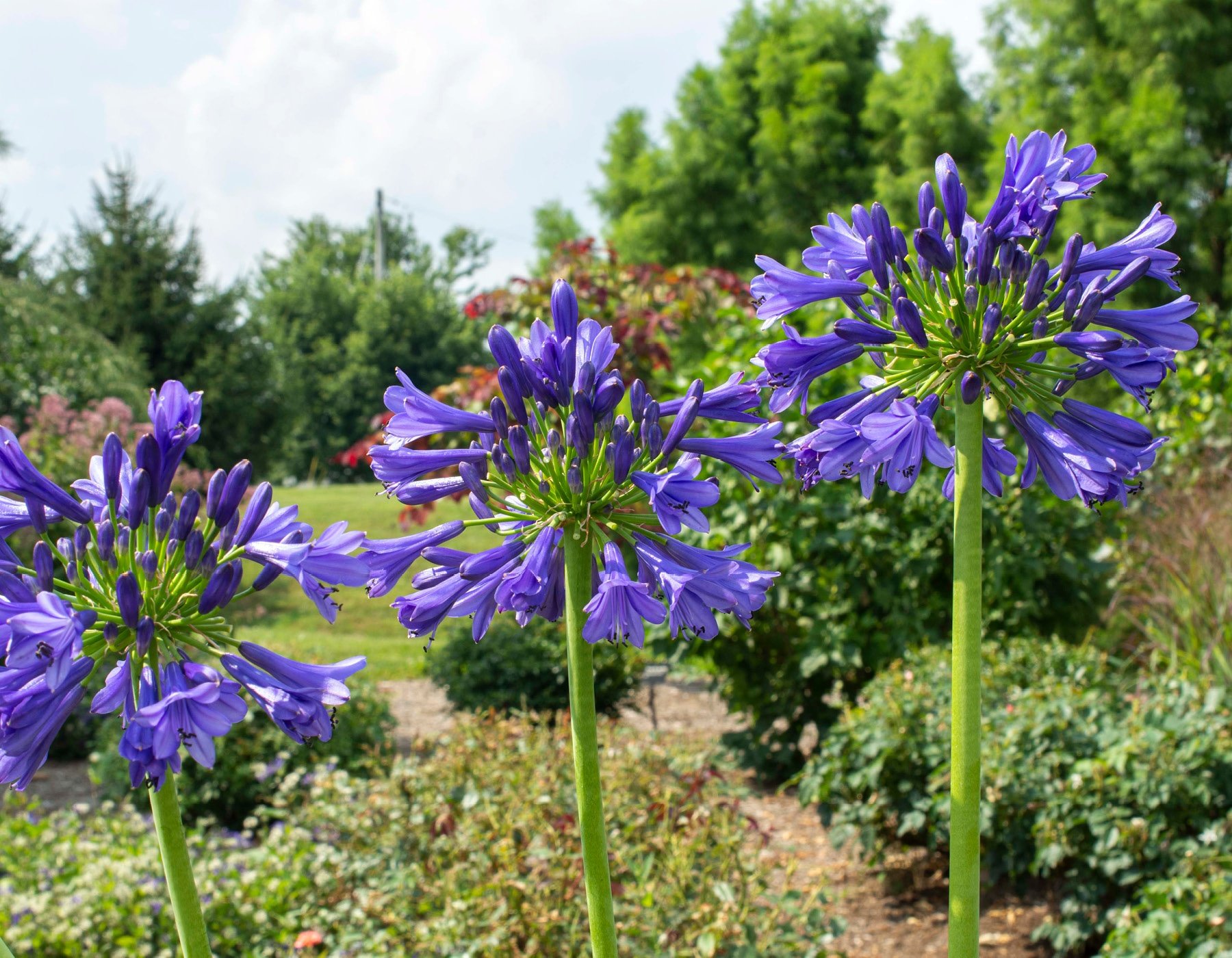Grasping the Art of Agapanthus Care: Vital Actions for Healthy Growth and Vivid Blossoms
In the realm of horticulture, the farming of agapanthus stands as a fulfilling endeavor for those who seek to nurture these stylish flowering plants. From selecting the best range to grasping pruning techniques, the trip in the direction of growing growing agapanthus plants is diverse and holds the key to opening the complete potential of these botanical treasures.

Selecting the Right Agapanthus Range

When selecting the ideal Agapanthus range for your yard, think about variables such as environment viability, flower color, and growth routine. Furthermore, take into consideration the climate in your region to make certain the Agapanthus variety you select can prosper in your specific problems. Comprehending the growth habit of various Agapanthus varieties is critical for appropriate positioning within your garden.
Ideal Growing Conditions
Taking into consideration the optimal ecological demands is crucial for effective Agapanthus farming. Agapanthus plants are sensitive to chilly temperatures and need to be protected from frost during winter season months.
To guarantee healthy development and dynamic flowers, plant Agapanthus bulbs at a deepness of concerning 2-4 inches and area them 8-12 inches apart. Mulching around the base of the plants assists maintain moisture and subdues weed development.
Watering and Fertilizing Tips
Maintaining correct dampness levels and offering necessary nutrients are key components in the treatment program for Agapanthus plants. It is critical to strike a balance when it comes to watering Agapanthus. If overwatered, these plants prefer continually damp soil however are vulnerable to root rot. Throughout the growing period, water deeply when a week, ensuring the soil is well-draining to stop waterlogging. In hotter climates or throughout periods of drought, even more regular watering might be needed to maintain the soil equally wet. Nonetheless, minimize watering in the winter to stop waterlogged conditions.
Feeding Agapanthus is necessary for promoting healthy and balanced growth and prolific flowers. Use a balanced plant food, such as a 10-10-10 formula, in the early springtime as brand-new development arises. By adhering to these watering and feeding pointers, you can guarantee your Agapanthus plants thrive and create vivid, durable blooms.
Trimming Strategies for Agapanthus
Trimming Agapanthus plants at the ideal times and with appropriate strategies is important for keeping their health and promoting optimal development and blooming. The ideal time to prune Agapanthus remains in late winter or early springtime prior to brand-new development emerges. Begin by getting rid of any dead or yellowing leaves near the base of the plant. Cut them as close to the ground as feasible without damaging the emerging shoots.
Deadheading spent blossoms can additionally redirect the plant's power right into producing even more blossoms instead than setting seeds. If you desire to accumulate seeds for proliferation, leave some flowers to fully grown and completely dry on the plant.
Bear in mind to utilize clean, sharp devices to make precise cuts and lower the threat of presenting conditions. Agapanthus. Normal pruning will certainly aid keep your Agapanthus looking healthy and balanced and cool while ensuring an abundant screen of lovely blossoms
Taking Care Of Typical Parasites and Diseases
After ensuring correct pruning techniques for Agapanthus, it is vital to resolve common parasites and conditions that can influence the health and wellness and vitality of these plants. best site Agapanthus plants are normally hardy but can still succumb certain problems. One common bug that affects Agapanthus is the Agapanthus gall midget. This little, orange fly lays its eggs in the foliage, causing altered development and blossom buds that stop working to open. To combat this parasite, trim and ruin any type of affected plant parts and think about utilizing insecticidal soap.
In addition, Agapanthus plants can experience from root rot if they are grown in poorly draining dirt. By being attentive and taking timely action versus conditions and insects, you can assist your Agapanthus plants grow and produce vibrant my latest blog post blooms. Agapanthus.

Final Thought
To conclude, mastering the art of agapanthus treatment entails picking the right range, providing ideal planting conditions, correct watering and fertilizing, proper trimming techniques, and addressing usual parasites and illness. By following these essential actions, you can ensure healthy and balanced development and lively blooms for your agapanthus plants. Remember to consistently check and preserve your plants to promote their total health and durability.
To make certain healthy development and check dynamic blooms, plant Agapanthus bulbs at a depth of regarding 2-4 inches and space them 8-12 inches apart. By complying with these watering and fertilizing pointers, you can ensure your Agapanthus plants prosper and produce dynamic, lasting blooms.
One typical insect that affects Agapanthus is the Agapanthus gall midget. In addition, Agapanthus plants can experience from origin rot if they are planted in improperly draining pipes soil. By following these essential actions, you can make certain healthy and balanced growth and lively flowers for your agapanthus plants.